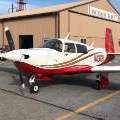How long do your tires last you?
Tire Longevity
16 members have voted
-
1. How many cycles do you find you get out of a main wheel tire?
-
1-50 landings1
-
51-100 landings0
-
101-150 landings0
-
151-200 landings0
-
201-250 landings2
-
251-300 landings4
-
301-400 landings4
-
401-500 landings0
-
501-1000 landings4
-
1000+ landings1
-
-
2. How long do you find a main wheel tire lasting you?
-
Less than a year1
-
1 year0
-
2 years2
-
3 years3
-
4 years3
-
5 years3
-
6-10 years3
-
11-20 years1
-
21+ years0
-


Recommended Posts
Join the conversation
You can post now and register later. If you have an account, sign in now to post with your account.